Adding Devices to the NBnano Platform
Adding a device to the Platform creates a virtual instance of your device where you can manage data, track location and create alerts to respond to unexpected events.
Data from these devices can then be visualised, monitored and controlled from within the Platform.
Find your device’s driver
Every IQnexus device has an associated driver that tells the platform how the incoming data is formatted.
You will need to know your devices model number to find the correct driver on the Marketplace.
The model number is located on the sticker on the back of your device
-
Navigate to your projects devices and select IQnexus Market at the top right of your screen.
-
Search for your device’s driver using the your devices model number in the Model field.
-
Select Actions → New Device from the menu to the right of the driver.
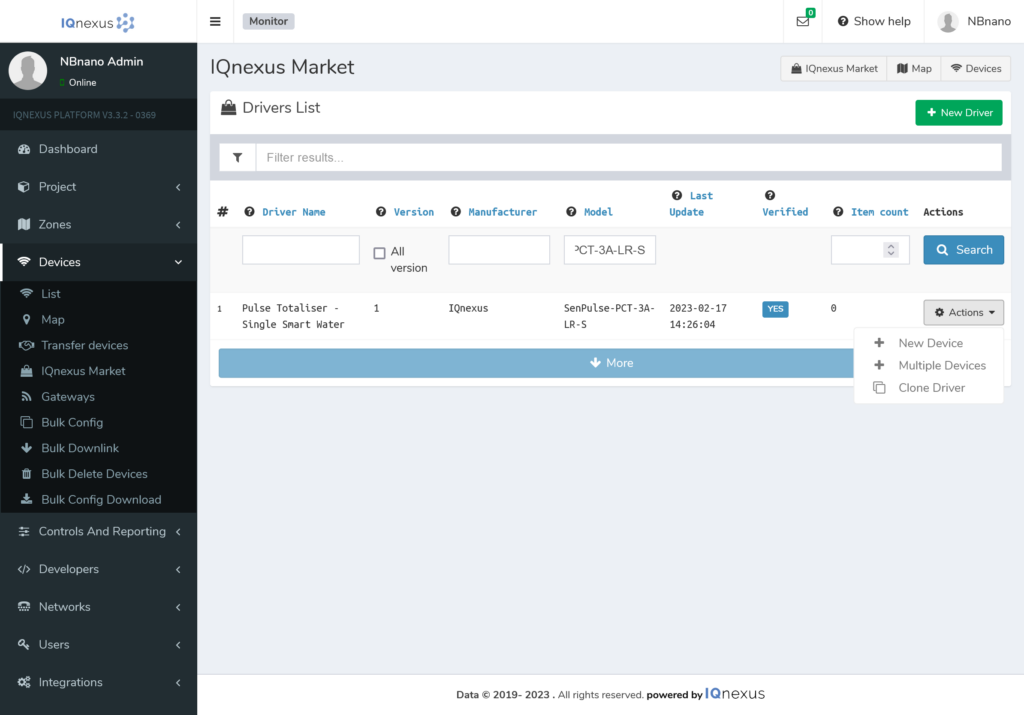
Device Info
Complete the form to set-up your device info.
Depending on your device and driver you may see some or all of the following Tabs.
New Device Tab
Name
This is required for all devices and must be unique to the platform. Alpha-numeric characters with spaces, – and _ are allowed. e.g. 12_Smith_st Smart-meter
DevEUI
This is required for a LoRa device and is your device identifier on the LoRa network. Find yours here.
Application Key
Every device on the Lora network using OOTA will have an application key, which is used for device activation.
Credential
This field is a token that is sometimes required depending on your IoT network.
Motion
This sets if the device is static or in constant motion. If you select motion the location will be updated using the devices GPS coordinates.
Supports class c
Here we can specify if our device supports class c. More information about the classes can be found here.
Location
This location can be set for every device by dragging the pin on the map or by entering an address.
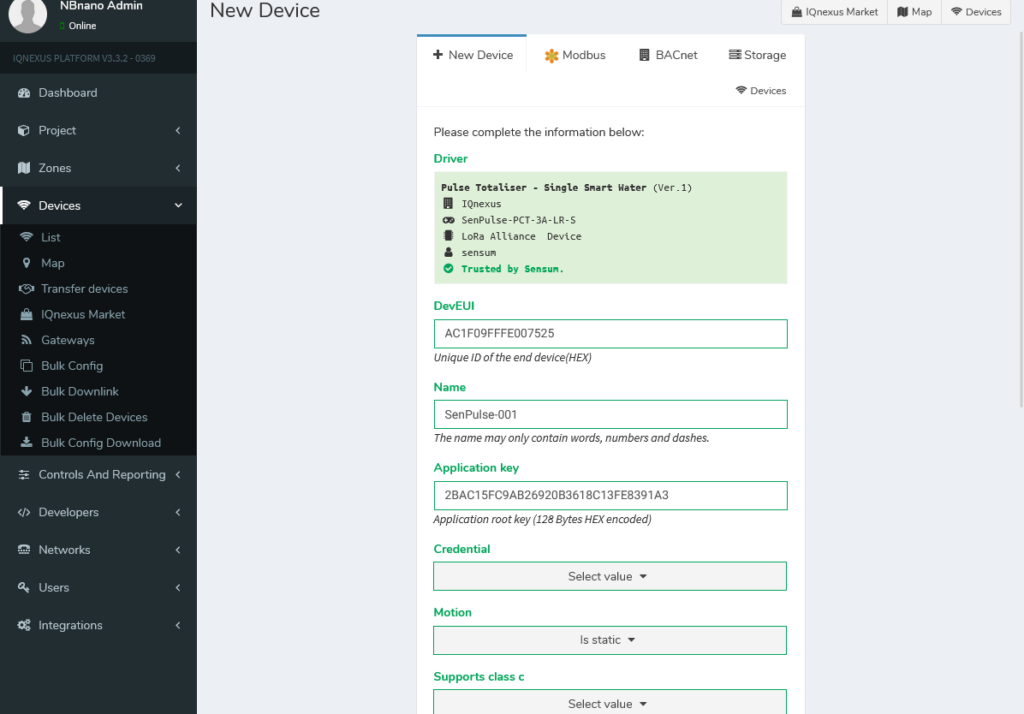
Modbus Tab
MODBUS Unit Identifier
This is required if your project has modbus enabled. This is a unique number between 1 and 254 and represents the modbus ID of this sensor should you want to retrieve data from here into your BMS system.
MODBUS Master IP Address
This field determines who can retreive data from this device. If this is set to 0.0.0.0, it means that everyone can access this device via modbus if they know the ip. You can limit this by setting this to the ip address that you will be using to retrieve data.
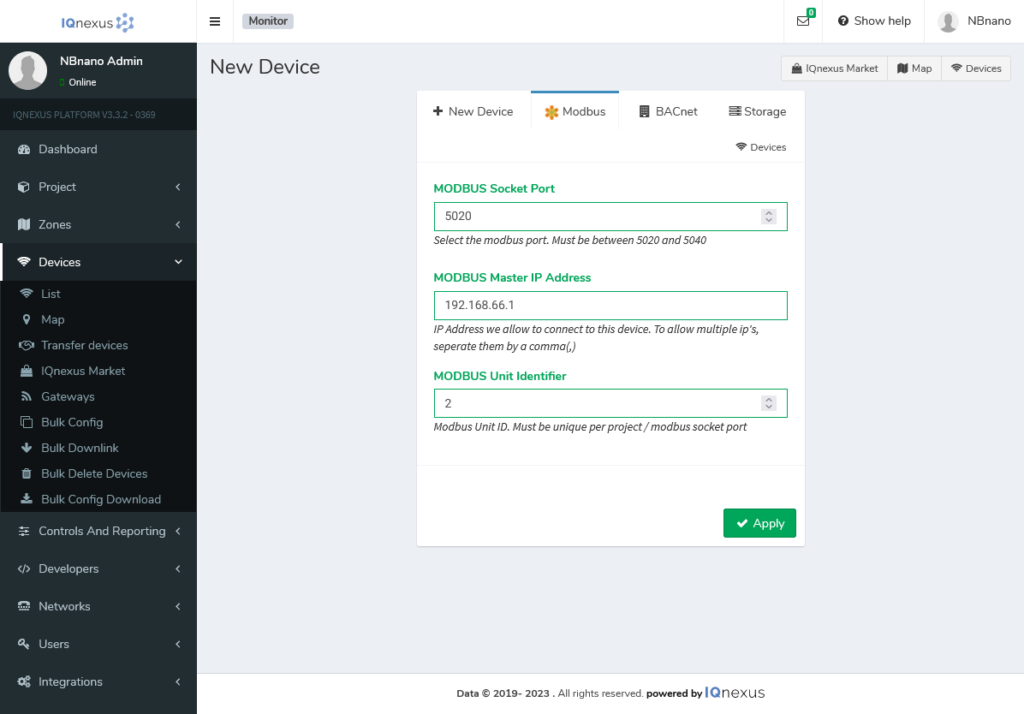
BACnet Tab
BACNet Unit identifier
This is required if your project has BACnet enabled. This is the bacnet unit ID if you want to retrieve data from here into your BMS system.
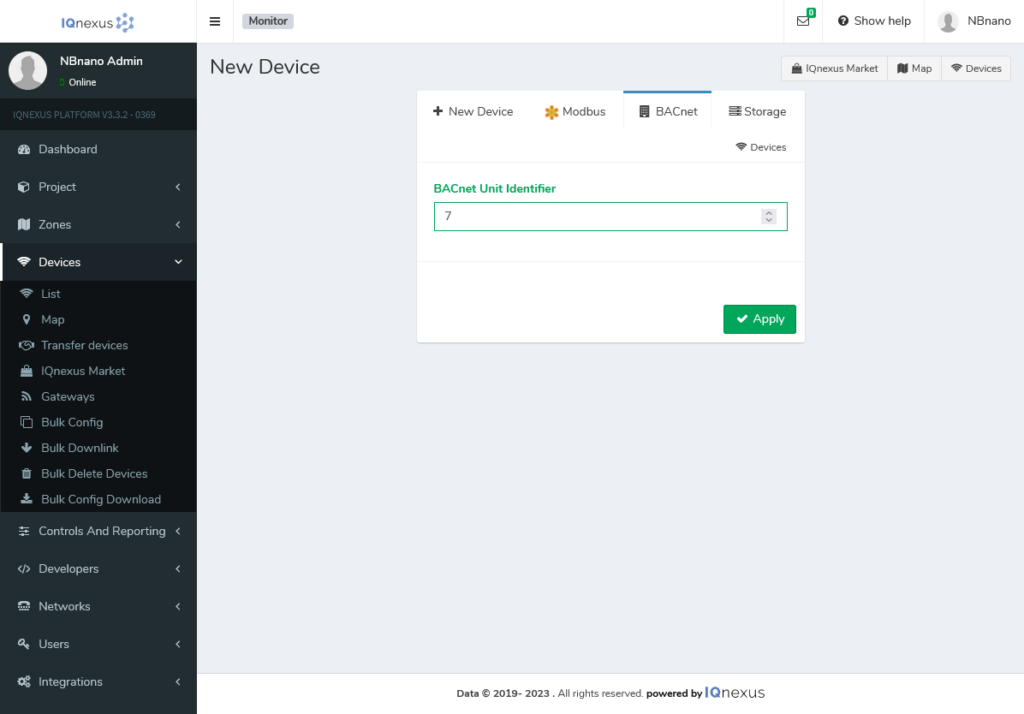
Storage Tab
Messages
Here you can define how long uplinks are stored for and calculate based on the interval how much storage space it will take up over time. Individual data records are deleted after the storage time, however a daily data record is saved to keep historic data and trends.
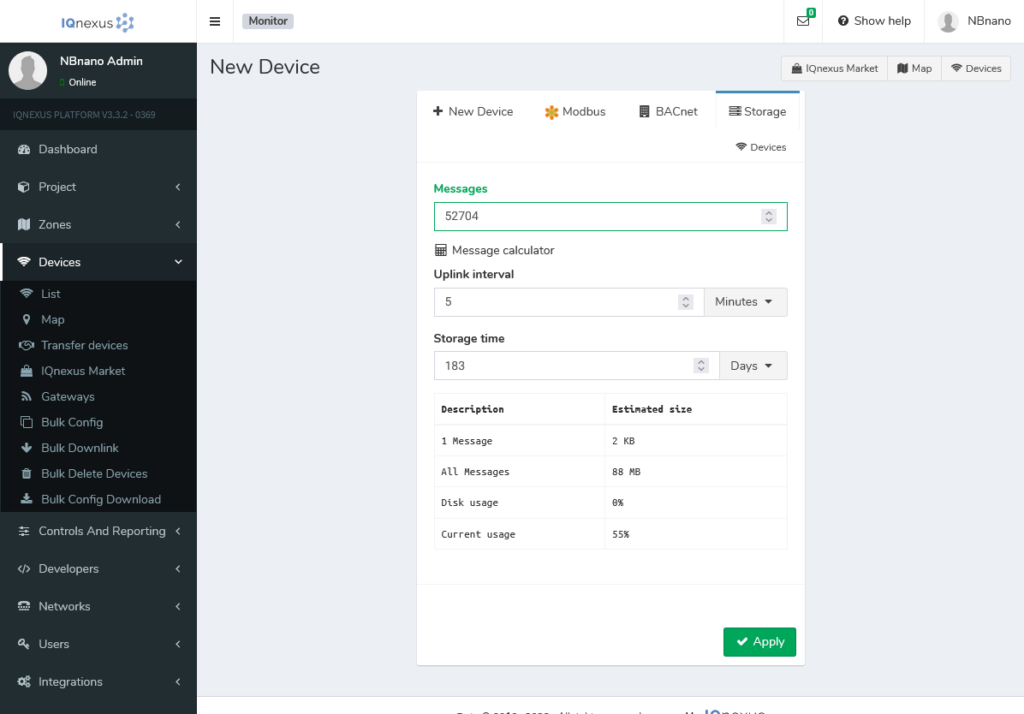
You can now press the apply button and your device will be added. If you navigate to the devices screen you should see it in the list. The devices status will go green once a valid uplink is received.
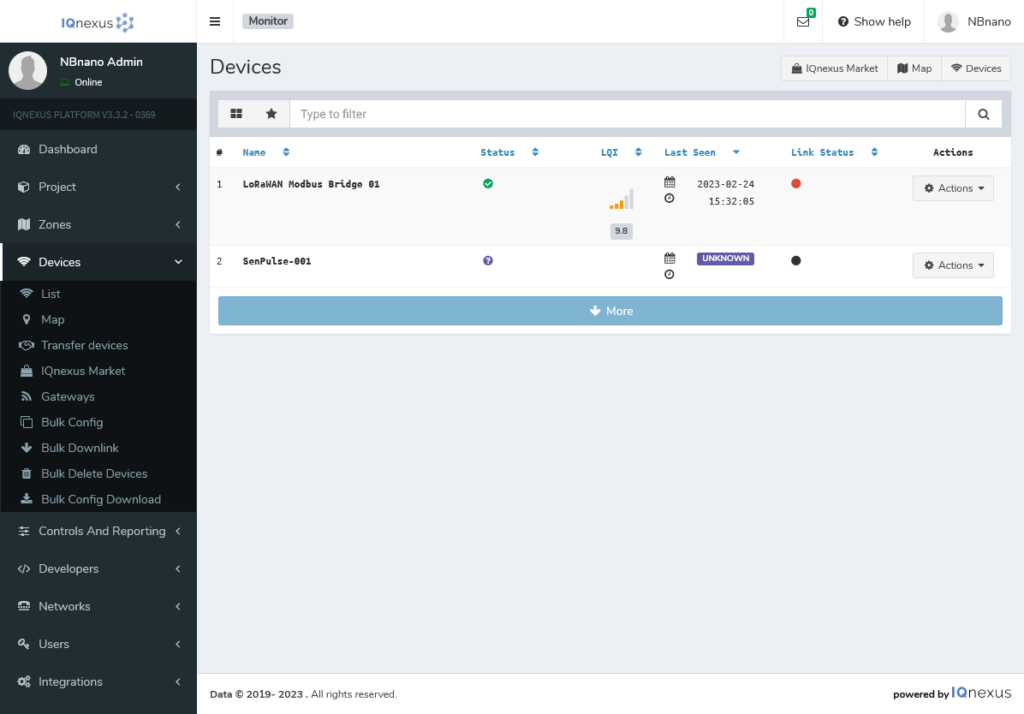
Ensure your Device is fully configured to get the most from the platform.
If you have any issues, please Contact us.

